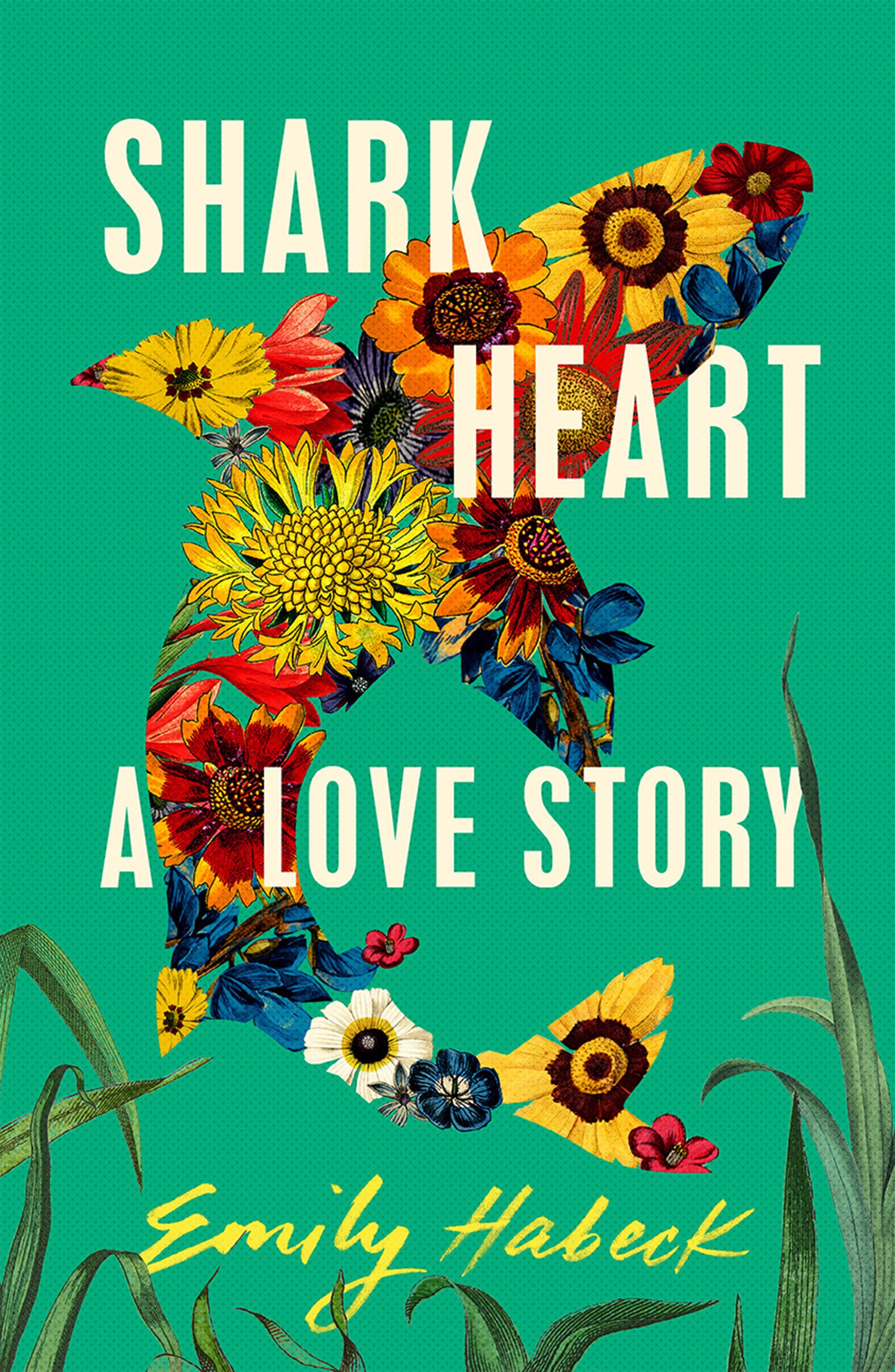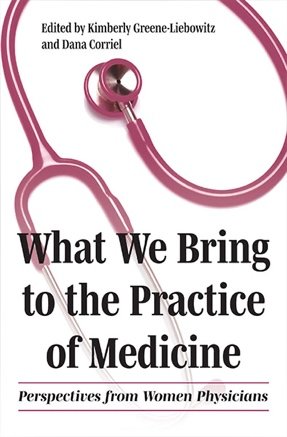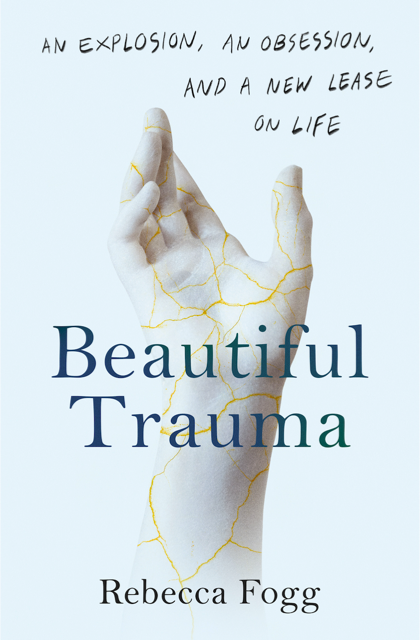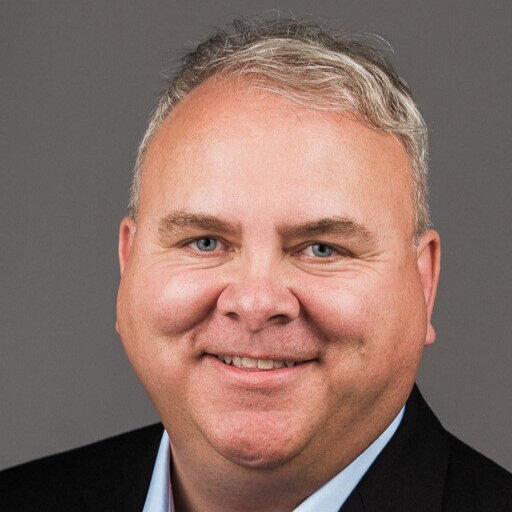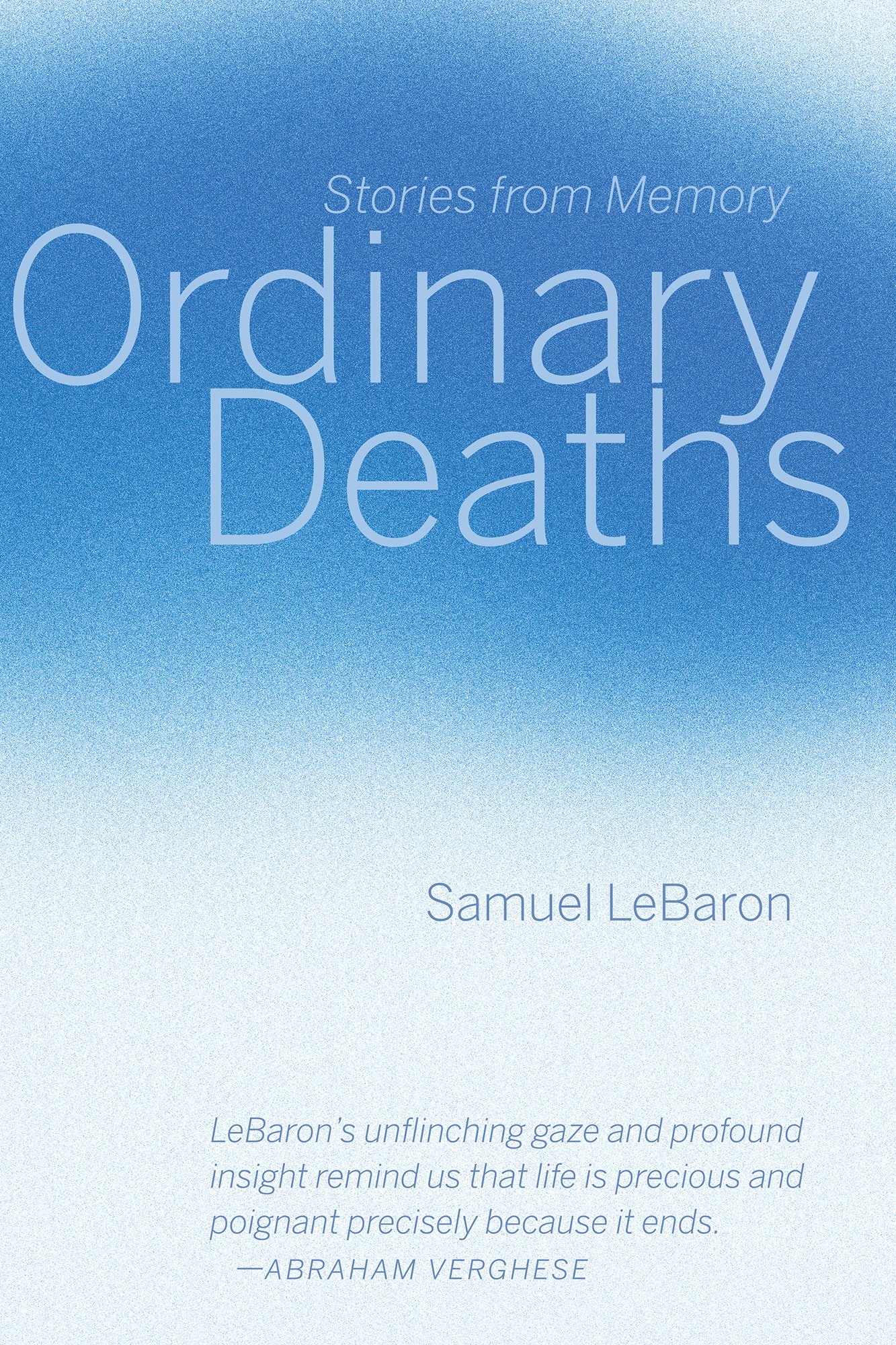Every obstacle in the life of a medical student or physician leaves a mark. No one can truly know how they will cope with a spouse’s death, academic failure, a parent’s dementia, work-life upheaval, sudden trauma, or chronic debility. If left unexamined, the scars accumulate since, of course, the work of medicine and healthcare must continue unabated.
Read moreMoving Along: A graphic medicine novel about Parkinson’s Dance by Lisbeth Frølunde, Maria Bee Christensen-Strynø and Louise Phillips
Parkinson’s disease (PD) is a progressive neurodegenerative condition clinically identified by the hallmark features of shaking, stiffness and slowness. PD is also marked by a multitude of non-motor symptoms like constipation, cognitive changes and sleep disorders. Any number of symptoms and intensities can exist in each patient, leading to a remarkably heterogenous patient population. While effective symptomatic treatments exist, the only known means of quantitatively slowing progression to date is exercise, specifically cardiovascular exercise that increases heart rate (1).
Read moreBut I Still Have My Fingerprints, a book of poetry and healing by Dianne Silvestri, MD
Dianne Silvestri’s second book of poetry But I Still Have My Fingerprints (CavanKerry Press, 2022) artfully documents her shattering experience as a doctor diagnosed with acute myeloid leukemia. Raw, real and unique poems give acute insight into a life-altering trauma through the double lens of a physician who has become the patient.
Read moreScivias Choreomaniae, a poetry collection about madness and mystics, psychosis and prisons by Lake Angela
Scivias Choreomaniae (Spuyten Duyvil, 2024), a poetry collection by Lake Angela, a poet, translator and dancer-choreographer from Lake Erie, transports readers to an outdated prison for schizophrenics and psychiatric inmates from medieval times to the time-space of the contemporary United States.
All who pass through the “mad-houses” are held behind wrought-iron words, including the author as dance therapist, whose great failure culminates when her augmenting madness fells her into a similar psychiatric ward. But her unusual success is that before her downfall, the poet uses dance therapy to rot the iron words of prison cells and chains, exposing the core of the institution where doctors and medical staff treat the patients with brutality.
Read moreThe Sky Was Falling: A Young Surgeon’s Story of Bravery, Survival and Hope by Cornelia Griggs
The sky is falling. I'm not afraid to say it. A few weeks from now, you may call me an alarmist, and I can live with that. Actually, I will keel over with happiness if I'm proven wrong," wrote Dr. Cornelia Griggs in her March 19, 2020, OpEd in The New York Times. Dr. Claire Unis reviews this reflective memoir.
Read moreOur Long Marvelous Dying by Anna DeForest
One moment of Anna DeForest’s Our Long Marvelous Dying, just published by Little, Brown and Company, captures the immense grief at the root of their new novel:
In the interval between giving a dose of intravenous opioids and seeing the peak effect, I will sometimes pass the time by catching up on the news. There is almost always a disaster imminent…You get used to it…
A sense of resignation and detachment pervades the story told by an unnamed narrator, who works as a palliative-care fellow in New York City after the peak of the early COVID-19 pandemic. In the first chapters, she recounts aspects of her training as a specialist, who “serves as a sort of illness interpreter, bringing the jargon of clinical medicine into the life and language of the patient who is living the experience.” It’s a specialty also “trained to be comfortable with [prescribing] the stronger stuff: morphine, hydromorphone, fentanyl.” As the fellow learns these skills, an assessment of how her specialty serves the dying patient and her colleagues becomes clear:
The trouble that the other doctors have is not a lack of gentleness. Well, not only that. More often what they cannot do is tell the truth. They pack death up in so much misdirection, talk about the success or failure rate of this or that procedure or treatment, when the truth is the patient will be dead soon no matter what we come up with to do in the interim. That’s the part they need a specialist to say.
We also get glimpses of the narrator’s personal life: her relationship with her husband Eli, the dark ground-floor apartment they rent, the chess games she plays with her young niece Sarah, who her brother has left with them. We learn about the death of her father. Throughout the novel, the narrator seeks ways to withstand suffering—the global and local, present and past—in her daily existence.
Anna DeForest (they/their) is the author of the novels A History of Present Illness and Our Long Marvelous Dying, and a palliative care physician in New York City.
Photo by Stephen Douglas
Our Long Marvelous Dying is DeForest’s second novel and in some ways narratively follows A History of Present Illness, published in 2022, which challenged the lore of medical education through the story of a student managing her own personal trauma and the wider trauma of American healthcare. Reviews of DeForest’s first novel linked the writer, who works as a palliative care physician at Memorial Sloan Kettering Cancer Center in New York City, to the narrator—and the same might apply to Our Long Marvelous Dying, as many moments seem pulled from the firsthand experience of a physician versed in hospice and palliative care.
In many of the novel’s settings, bereavement surrounds the narrator and often consumes her. But the grief that grounds the story and proves most unsettling for the narrator stems from the death of her absent and unkind father. DeForest structures the story to reflect the narrator’s apprehension towards him. We see him in pieces between scenes in the hospital, and can’t put him together as a whole until the very end. In managing the arrangements for his death, the narrator takes us through their fraught relationship. His favorite story to tell her romantic partners when meeting them for the first time is how whenever she cried as an infant, he said “I never liked you from the beginning.” But the cruelty of his abandonment is in its persistence—he is a “latent monster,” a “ghost” from whom she never stops craving acknowledgement.
Beyond her family, the narrator guides us through additional layers of grief in a way that we never stay long enough in one place to take up the devastation. The world offers constant tragedy—floods, destruction of coral reefs, extinction of thousands of species. And every day the COVID-19 pandemic rages. The reader hears about the refrigerated trucks lining New York City blocks, but what the reader sees in specific detail are the causalities for healthcare workers: their loneliness and coping mechanisms of alcohol use, disordered eating and SSRIs for suicidal ideation. During rounds, for example, an attending physician recounts the peak of the pandemic and says absently, “I am on an SSRI.” Meanwhile, the narrator notices the spring air coming through the window in his office that has “no bars, no screen. Fourteen floors up, with a view of the Empire State Building.” There is an omnipresent threat of self-harm, if not from one tragedy, then from the weight of so many others.
But Our Long Marvelous Dying is not a trauma dump. It confronts the obvious truths we train ourselves to overlook: the truth of death in a hospital, the truth of our own progression to death. It forces the question of “what is the purpose of living?” and does not give a satisfying answer. In this way, the novel’s title does not allude to the hidden deaths in the hospice wings, it alludes to us. Without despair, the narrator states “that all of us will die…that all of us are dead already.” The narrator acts as a palliative-care physician for us all, interpreting the jargon and euphemisms that drown the simple truth of daily tragedy. The sugar coating has dissolved, and she wants to communicate that “no one is coming to comfort you” and “nothing will help.”
One of the most provocative aspects of DeForest’s work is their ability to situate the reader in the day-to-day clinical world. The narrator normalizes death, dying and the grim collapse of human bodies that happens, not because of dispassion, but because of routine. While contributing to the book’s undercurrent of grief, the hospice unit provides meaning on a quotidian basis. On a phone call, in response to a mother’s dismay that her daughter may die before they arrive, the narrator reflects: “of course she can and does die alone.” In another situation, she reflects that an aging actress “dies the same as anyone.” These are tragedies that are contained, expected and managed.
Despite submission to muted sorrow, the narrator still attempts to manage her trauma. The palliative-care fellowship itself, in the view of its program director, draws those with personal layers of grief in addition to their professional interest. For the narrator, her work keeps the despair at bay and allows her to reflect on the minutiae of existence—for example, describing her underground commute as “the long stretch of track between where I live and everything that matters.” In revolving her life around the care of others, she does not have to generate her own will to continue living.
She also tries to endure by tempering her connections, especially to her husband Eli, a “well-adjusted” and handsome chaplain with a network of friends who adore him. The constant in their marriage is the restrained threat of its end, from “red flags” or laments that “it isn’t working.” This sense of detachment also manifests with her niece Sarah, who she describes as her “temporary daughter” while Sarah’s father is unable to care for her due to his substance use. We learn that an intergenerational dearth of attention and love has conditioned the narrator to the security of pain rather than love; the cycle of abuse contributes to her decision not to have children. The place where she seeks connection is a monastery out of the city, where she arrives and departs anonymous to her peers.
While there is no neat resolution, the protagonist steadily approaches the grief that eludes her—the death of her father. We see this through the lengthening of the scenes themselves. Initially, we learn about her father in brief moments between scenes of her palliative-care fellowship; by the end, we are allowed to linger as she sorts through his belongings. For a person who asks uncomfortable questions (Are you happy?) and speaks revolutionary words in a hospital (death and dying), the narrator takes her time to confront his death. She asks a rabbi at the hospital what to do after death about the bad acts her father committed in his life. Just as she can cut through medical euphemisms and jargon, he cuts through her question: “The weight you feel, he says, is not a need to forgive anyone. Just call it grief. Call it trauma.”
In Our Long Marvelous Dying, DeForest challenges our discomfort with death and instead leads with loss and our search for meaning within it.—Margo Peyton
Margo A. Peyton is a resident physician in neurology at Massachusetts General Hospital and Brigham and Women's Hospital. Prior to medical school at Johns Hopkins, she worked in film and television story development for DreamWorks Animation. Her essays and book reviews have appeared in The New England Journal of Medicine, JAMA and the Boston Society of Neurology, Neurosurgery, and Psychiatry.
Rearranged: An Opera Singer’s Facial Cancer And Life Transposed by Kathleen Watt
From the author: Bone cancer in my cheek ended my career as an opera singer and brought me face to face with mortality, disfigurement, the meaning and uses of beauty—and a lot of left over pieces.
Read moreShark Heart: A Love Story by Emily Habeck
When I learned of an upcoming book about a man who turns into a great white shark, I thought this was another example of our need to tame a dangerous wild animal into something suitable for a child’s tee shirt. Shark Heart, A Love Story, Emily Habeck’s first novel (Simon & Schuster, 2023) is not that at all, but much more: a love story about newlyweds Lewis and Wren, a meditation on our relationship with the animal world, and an exploration of illness and caregiving. Shark Heart explores the characteristics we share with other species and the question of what makes humans unique, while it also considers how health and illness affect our relationships with other people.
Read moreWhat We Bring to the Practice of Medicine: Perspectives from Women Physicians. Editors: Kimberly Greene-Liebowitz and Dana Corriel
In 1960, women comprised 6.7% of practicing physicians; today, that number is 37%. Women often face different difficulties from their male counterparts; even today, misogyny, discrimination and societal expectations affect training, health, specialty selection and academic progress.
In What We Bring to the Practice of Medicine, a collection of essays published by Kent State University Press, women share stories from their careers that altered how they saw themselves and their patients. These authors have no fear of vulnerability; they recognize their emotional responses as not only acceptable, but necessary for them to be the physician they want to be.
Read moreBeautiful Trauma: An Explosion, An Obsession and A New Lease on Life by Rebeca Fogg
Rebecca Fogg notes that there are innumerable responses to recovery, and she wisely avoids turning this story into a “how-to-survive-a-trauma” manual. This is no misery memoir, one that concentrates on the vulnerability and suffering of the survivor. She does describe the intense pain of the injury, however, in the objective, almost detached manner required of a scientist. She has a relationship with her hand as an object of concentrated study.
Read moreUncaring: How The Culture of Medicine Kills Doctors and Patients by Robert Pearl
In Uncaring: How the Culture of Medicine Kills Doctors & Patients (published by Public Affairs), Dr. Robert Pearl, a Stanford professor, plastic surgeon, and former chief operating officer of Kaiser Permanente, writes a well-documented panoramic narrative and insider view that demystifies the complicated healthcare system. His book offers a disturbing look at healthcare system that has lost its purpose. Pearl relates inefficiencies and slow changes, as patient centric views held by physicians and systems that have failed to adapt, both to cultural and individual principles, held so dearly for decades.
Read moreThe Song of Our Scars: The Untold Story of Pain by Haider Warraich
Almost everything we know about pain and how to treat it is wrong, Haider Warraich says in his insightful book The Song of Our Scars: The Untold Story of Pain, published earlier this year by Basic Books. The physician and assistant professor at Harvard Medical School claims that there are dire misunderstandings between patients who feel pain, the clinicians who address it, and the researchers who study it. Worst of all, he says, pain has transformed from a symptom into a disease.
Haider Warraich is a physician, author and researcher at the VA Boston Healthcare System, Brigham and Women’s Hospital and Harvard Medical School. He has published more than 140 research papers including in the NEJM, JAMA and BMJ. He frequently writes for the New York Times and Washington Post, and is the author of the books Modern Death, State of the Heart and the just published The Song of Our Scars – The Untold Story of Pain (Basic Books).@haiderwarraich
One in five American adults—an estimated sixty-six million in total—experience chronic pain, resulting in billions of dollars in direct medical costs and lost productivity. Lower back pain is the leading cause of disability in the United States, followed by migraine headaches, neck pain and conditions like osteo and rheumatoid arthritis. And Americans are most likely to use opioids to help alleviate their pain. Yet, as Warraich points out, opioids provide little to no benefit for chronic non-cancer pain, and can even make it worse.
Pain’s storied complexity is multifaceted and multilayered. Its treatment, in Warraich’s view, requires empathic holistic care that considers how pain is racialized, gendered and personal. Pain is subjective. You can have pain without suffering. There is no single dedicated pain center in the brain. The pain of Black people remains both under-recognized and under-treated. Women are more likely to feel pain, but their pain is also more likely to be dismissed. Simply assessing pain on a numeric scale doubles the risk of opioid overdoses in hospital. And exercise is a vital part of any multidisciplinary approach to managing chronic pain.
Warraich himself has chronic back pain due to a sports injury that happened many years ago when he was a medical student in Pakistan—around the time when he felt confirmed in his vocation to be a doctor. Just when he felt like he had fallen in love with medicine, he broke his back.
Now an insightful, wounded healer, Warraich draws from his own experience of how disruptive chronic pain can be—how it “disrupts the way a person moves through their life, the narrative they define themselves by, the arc of their stories.”
The Song of Our Scars is filled with research findings, clinical vignettes, historical details and sociopolitical commentary. Yet the story Warraich tells is so broad and at times surprisingly sequenced—jumping from the mythological Greek world, to the history of opium, to the American Civil War—that it can sound like listening to the radio while scanning the channels, catching snippets of newscasts in search of a good song. We as readers want to hear more of Warraich’s own personal self-reflections, which would help focus his narrative by giving voice to his song, and deepen its impact on readers, his listeners.
Perhaps most helpful is Warraich’s concern for the origins of the opioid addiction crisis in America. The story of the opioid crisis continues to unfold in the United States, and recently came into the headlines in the documentary “All the Beauty and the Bloodshed,”directed by award-winning director Laura Poitras about artist Nan Goldin’s life and chronicles her addiction and activism that led to major museums such as the National Portrait Gallery in Washington, DC, the Guggenheim, the Tate and others to stop taking donations from the Sackler family and removing the Sackler name from the walls of their institutions. The documentary won the prestigious Golden Lion at the Venice Film Festival in September.
In The Song of Our Scars, Warraich highlights how Cicely Saunders’s revolutionary approach to pain management in hospice care was “hijacked” into a business strategy by the pharmaceutical industry, whose goal, he says, “was to take Saunders’s approach toward total pain experienced by people at the end of life and apply it to people in every phase of life, treating routine medical conditions as if they were terminal illnesses.” Saunders, who started her clinical practice as a nurse and became a doctor, is credited with founding the first modern hospice and establishing the discipline and the culture of palliative care in the late 1950s.
In terms of narrative care, Warraich brings to mind, but does not reference, other prominent physicians and scholars who describe and advocate also for such empathic patient-centered care, including Rita Charon, Victoria Sweet, Arthur Frank and William Randall.
What are the songs of our scars? What type, form and shape do they take? There are love songs, ballads, laments and anthems, to name an obvious few. How do they help us? Do they capture our hearts and move our spirits? Warraich hopes so. As patients tell us their tales of pain, he knows how important it is to listen to them. And he wants healthcare providers to learn how to listen more fully, deeply and more compassionately in clinical practice. Empathy is what makes a good doctor, he says—empathy and kindness.
“As we look to the future and take stock of all that we know about chronic pain,” he says, “we find that the most promising treatment approaches don’t involve any chemical inebriation or procedural manipulation. They involve one human being talking to another, helping them realize that the path to relief was within them all along.”—Robert Mundle
Robert Mundle is a graduate of Yale Divinity School and a palliative care chaplain in Kingston, Ontario. He is the author of How to Be an Even Better Listener: A Practical Guide for Hospice and Palliative Care Volunteers (JKP 2018).
A History of Present Illness by Anna DeForest
The narrator of A History of Present Illness is a young doctor going through the daily initiation of learning her vocation. In the story, the narrator subverts the fabled tradition of medical education through her position as an outsider on the inside. We discover her history in increments: She grew up in an unstable home with a mother who drank too much. In her adolescence, she walks in to see her pregnant mother sitting on the kitchen floor shooting staples into her arm. Financial instability is a way of life, as is self-injury: The narrator cuts lines into the creases of her hands, to manage the suffering and hide her scars.
Read moreOrdinary Deaths: Stories From Memory by Samuel LeBaron
Psychologist Samuel LeBaron’s book, “Ordinary Deaths” was recently published by the University of Alberta Press and in it, he examines the following truth without the drama often accompanying such writing: Death is not a heroic journey, a metaphorical “war” against fatal illness. It is, as the title states, ordinary.
Read moreIn Love: A Memoir of Love and Loss by Amy Bloom
Amy Bloom’s moving memoir, In Love: A Memoir of Love and Loss, is a love story about an idyllic marriage shattered when Bloom’s 60-year-old husband Brian’s forgetfulness takes over their lives. His personality changes, and he becomes distant and indifferent. “Names disappearing, repetition, information turned upside down, appointments and medications scrambled. Suddenly it seemed we argued endlessly about everything,” Bloom laments.
Read moreWords We Cannot Say by Sita Romero
Sita Romero’s debut novel Words We Cannot Say offers a true and unflinching look at pregnancy and hardship. The story is told through the lives of three different women as they navigate the struggles of friendship, motherhood, pregnancy and loss. Though the women seem to be entirely different, their lives connect in organic and often overlooked ways.
Read moreHEALING: When a Nurse Becomes a Patient by Theresa Brown, RN
Healing: When a Nurse Becomes a Patient by Theresa Brown was published by Algonquin Books in April 2022.
Theresa Brown’s 2015 book The Shift explored the question of what it means to care for others. In her new memoir, Healing: When a Nurse Becomes a Patient (Algonquin Books), Brown chronicles her experience with breast cancer from diagnosis through treatment and deepens that question into: How can we make the healthcare system more compassionate?
Read moreWhat Cannot Be Undone: True Stories of a Life in Medicine by Walter M. Robinson
What Cannot Be Undone: True Stories of a Life in Medicine by Walter M. Robinson was published early this year by the University of New Mexico Press.
Our training as physicians teaches us to bury our emotions, to remain objective and detached, and it has become clear that patients can perceive doctors as lacking empathy by hiding this aspect of themselves. The complexities of this dynamic are explored in Walter M. Robinson’s What Cannot Be Undone: True Stories of a Life in Medicine, a collection of essays examining the self-destructive results of detachment from the physician’s emotional responses, published recently by the University of New Mexico Press. When physicians cannot tolerate the pain and suffering of their inner life, compassion-fatigue, burnout, substance abuse and suicide are possibilities.
Read moreLetter to a Young Female Physician: Notes from a Medical Life by Suzanne Koven
Letter to a Young Female Physician: Notes from a Medical Life by Suzanne Koven, MD is both instructive and empowering for a professional audience. The “young female physician” is Koven herself 30 years ago, and the memoir’s title comes from a New England Journal of Medicine op-ed she wrote that brought to light Imposter Syndrome (a perceived and misplaced self-doubt that high-achievers are unworthy of the confidence others place in them and that soon enough they will be found-out as imposters). A primary care physician, Koven creates a narrative that addresses issues facing women in medicine such as pay iniquity, harassment and sexism. While all of the above is plenty to keep readers in the clinical world engaged, the book’s success resides in something else—the way Koven approaches universal truths by examining and honoring the specific experience of her life as a woman and as a doctor. Going beyond the halls of the hospital and the titular “young female physician,” she creates a narrative sure to resonate with many.
Read moreAt Peace: Choosing a Good Death After a Long Life by Samuel Harrington MD
At Peace: Choosing a Good Death After a Long Life by Samuel Harrington, MD
At Peace: Choosing a Good Death After a Long Life is a book that should be studied by students preparing themselves for careers in medicine, by those taking care of aging patients, by family members who don’t want their loved ones to suffer, and by everyone who desires for their life to end in peace with a good death.
Read more









